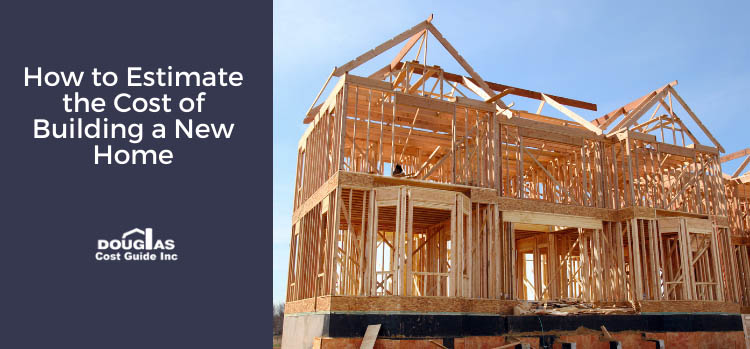When working families try estimating the cost of building a new home, the effort often proves complicated and confusing. The cost of wide-reaching items can be challenging to pin down, and comparisons to seemingly similar real estate markets may not result in an accurate new construction estimate. Those are reasons why everyday people, as well as professionals in construction, real estate, and financial institutions, use a resource that compiles the most reliable data when estimating the cost of building a new home — the Douglas Residential Cost Guide. The following are things home builders may want to consider when determining how much a new home will cost to build.
1. Consider Location
The basic square footage costs involved in building a home differ significantly from region to region. Expenses such as building applications and fees are not necessarily the same. The Douglas Residential Cost Guide incorporates the most up-to-date cost of these and other items to ensure users arrive at a reliable estimate.
2. Think About Site Preparation
It’s not uncommon for people who do not work in the home-building sector to omit or underestimate certain costs. Site preparation tends to fall into this category because it’s easy to miss the cost of trenching and the heightened expense of removing large underground boulders, shale, and other impediments.
3. Understand the Types of Building Materials
Although some simplistic cost estimators provide a ballpark figure, they typically cannot account for local materials costs. And when families want specialized woodworking or high-end materials, generating a secure estimate requires an industry-leading resource.
4. Consider Labor Cost Fluctuations
Perhaps the murkiest expense to identify when estimating the cost of building a new home involves labour. Workforce shortages in fields such as masonry, carpentry, plumbing, and heavy equipment operation, among others, can cause a spike in wages. People outside the construction industry rarely know about rising labour costs. That’s why the Douglas Residential Cost Guide maintains a database of the latest fluctuations.
5. Examine Square Footage & Floor Plan
Estimating the cost of building a new home cannot solely be based upon average square footage, per se. Floor plans routinely alter the basic cost because they require a different amount of materials and work hours. What the Douglas Guide offers to avoid inaccurate estimates is the ability to calculate costs based on different floor plans, architectural styles, and unique elements.
6. Don’t Forget About Utilities
There are two ways everyday people generally miss the mark on new home utility expenses. The first involves failing to produce an accurate estimate for installing temporary service and the amount of power used during the building process. The other misstep involves the cost of permanently installing utilities into the home and expenses such as permits, inspections, and fees.
New Home Construction Calculator for Canadian Homes
Widely considered the gold standard for accuracy, the Douglas Residential Cost Guide leverages 30 years of experience and the most up-to-date information. The user-friendly resource makes estimating the cost of building a new home a seamless process that construction, real estate, and lending professionals consider the industry standard. By using the Douglas Residential Cost Guide when estimating the cost of building a new home, everyday people can plan reliable budgets.

